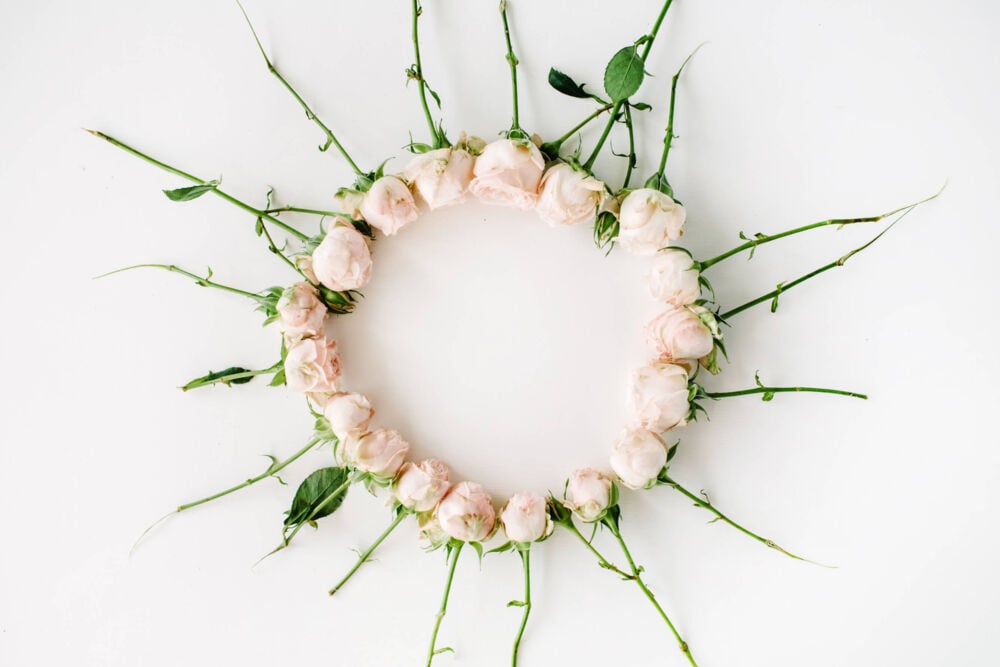How to shave pubic hair? Why do humans have it at all? We’ve got answers to these and many other questions in this article by Flo.
-
Tracking cycle
-
Getting pregnant
-
Pregnancy
-
Help Center
-
Flo for Partners
-
Anonymous Mode
-
Flo app reviews
-
Flo Premium New
-
Secret Chats New
-
Symptom Checker New
-
Your cycle
-
Health 360°
-
Getting pregnant
-
Pregnancy
-
Being a mom
-
LGBTQ+
-
Quizzes
-
Ovulation calculator
-
hCG calculator
-
Pregnancy test calculator
-
Menstrual cycle calculator
-
Period calculator
-
Implantation calculator
-
Pregnancy weeks to months calculator
-
Pregnancy due date calculator
-
IVF and FET due date calculator
-
Due date calculator by ultrasound
-
Medical Affairs
-
Science & Research
-
Pass It On Project New
-
Privacy Portal
-
Press Center
-
Flo Accuracy
-
Careers
-
Contact Us
Pubic Hair: Everything You Wanted to Know but Were Afraid to Ask


Every piece of content at Flo Health adheres to the highest editorial standards for language, style, and medical accuracy. To learn what we do to deliver the best health and lifestyle insights to you, check out our content review principles.
Why do people have pubic hair?
There are several theories about pubic hair’s purpose:
- It helps maintain the optimal temperature in the pubic region when the weather is too hot or too cold.
- It creates a favorable environment for normal vaginal microflora.
- It can indicate biological readiness for reproduction.
- It helps pheromones stick around longer, attracting sexual partners for possible conception.
- It protects the genital area from friction during exercise or sexual intercourse.
Regardless of these theories, the choice of what to do with your pubic hair (if anything!) is completely up to you.
Pubic hair color: does it always match?
Pubic hair color stands alone and doesn’t depend on the color of the hair on your head.
The color is determined by the amount of melanin (a pigment substance) in each hair, which can be different because the amount of melanin is different in different parts of your body.
In most cases, the color of your pubic hair is closest to the natural color of your eyebrows.
Throughout life, the melanin in your body decreases. This makes hair lighter and eventually grows gray, both on the head and in the pubic area.
Why does pubic hair grow to a certain length while head hair keeps growing?
Hair follicles go through three growth phases.
The first phase, known as the anagen phase, is responsible for hair length. The length of the anagen phase is based on genetics, but it can also be affected by hormones and stress levels. The anagen phase lasts between three and five years for head hair and a couple of weeks for pubic hair.
The longer the anagen phase, the longer the hair grows.
Take a quiz
Find out what you can do with our Health Assistant

Hair around the anus: everyone has it!
Hair around the anus is absolutely normal.
The distribution of hair, including on the genitals, is often due to genetics.
Scientists still aren’t completely sure why anus hair grows. One popular theory is that the hair helps keep your smell around, which, in turn, attracts potential partners.
According to another theory, the hair softens friction and prevents irritation.
Shaving pubic hair: what is the right way?
Shaving is the most popular way to remove pubic hair. It's simple and fast. However, this method has some drawbacks: its effect is short lived and it can cause irritation, ingrown hairs, and rashes.
To make the shaving process more effective and minimize irritation, first exfoliate your skin with a scrub. Use creams with natural moisturizing elements (e.g., aloe). Don’t use anyone else’s razor, and shave the hair in the direction of its growth. Finish up by rubbing your skin with an ice cube to close pores. Then, in half an hour, moisturize with a lotion.
By the way, it’s a total myth that hair grows back longer or thicker after shaving.

Discuss your pubic hair preferences
Chat about everything pubic hair on our secret chats
Pubic hair removal history
People have been removing the hair from their body for centuries.
Ancient Egyptians considered having pubic hair indecent, so they invented sugaring and waxing.
In ancient Rome, a hairless pubis was a status symbol.
Pumice, tweezers, and a special depilatory cream consisting of resin, goat bile, viper venom powder, and bat blood were used to achieve smoothness. Pubic hair trimming was not in fashion in Europe until the late 1900s.
In America, the first waxing salon opened in 1987. The technique gained popularity and is referred to as Brazilian waxing.
If you’re unsure how to get rid of pubic hair, remember that it’s completely optional. It’s natural to have pubic hair. If you want to remove it, there are lots of methods you can try. Find the one that suits you best.
Frequently asked questions about pubic hair
Is it necessary to cut pubic hair?
The short answer is no, it is not necessary to do anything to your pubic hair. Shaving your pubic hair is a personal choice.
Pubic hair may help protect your genitalia from infection and friction. Removing your pubic hair comes with the risk of getting cuts or ingrown hairs. You might also develop hyperpigmentation and inflammation of the hair follicles.
Removing your pubic hair can also increase your risk of catching herpes and other sexually transmitted diseases. This is because the sensitive pubis is left with small cuts where viruses and bacteria can get into your skin.
Can I use a hair removal cream on my pubic area?
You can use a hair removal cream around your bikini line, but make sure that the cream doesn’t get into your genital area.
Hair removal creams are easy to apply and break down the chemical bonds of the hair. This makes the hair very weak, and it can be easily scraped off.
What happens if I pluck my pubic hair?
Plucking or epilation removes the hair from its root beneath the surface of the skin.
Plucking your pubic hair can be painful and takes a long time. Plucking can cause redness, swelling, itching, irritation, and damage to the skin. It can also result in ingrown hairs (where the hair curls backward or sideways under the skin) and infection.
Is it normal to have a lot of hair around my vagina?
Yes, it is normal to have a lot of hair around your vagina.
Hair on the vulva and around the scrotum is normal. Everyone has pubic hair around their genitals, and it starts growing during puberty.
Pubic hair helps prevent dirt and bacteria from entering the vagina.
How do I make my pubic hair smooth?
Pubic hair can be made smooth by conditioning.
There are several moisturizers, oils, shampoos, and hair conditioners that can help condition and soften your pubic hair. A home mixture of shaved cucumber, coconut oil, and lychee might also help soften your pubic hair, or you can use argan oil.
Drinking plenty of water and keeping yourself hydrated can also help your hair stay smooth.
Is it better to shave or wax?
Thinking about your skin type, hair growth, and hair texture can help you decide if waxing or shaving is better for you.
If your skin is very sensitive, then waxing can be very painful. Waxing can cause rashes and aggravate your skin. Shaving is quick and pain free. Ultimately, it’s a matter of personal choice.
Is armpit hair the same as pubic hair?
Armpit hair is also known as axillary hair and grows in the underarm area. Pubic hair is darker and thicker body hair that grows in your genital region.
Should I wash my pubic hair with shampoo?
There is no need to wash your pubic hair with shampoo. Using shampoos, soaps, or perfumes can disrupt the pH of your vagina and cause irritation and other problems. Washing your pubic hair with warm water is enough to keep the area clean. If you want to use a shampoo or soap, look for pH-balanced pubic washes to clean your pubic hair.
How do I prevent razor bumps when removing pubic hair?
Here are some tips to prevent razor bumps when removing pubic hair.
- Use a good-quality razor.
- Clean your bikini area with warm water.
- Lightly exfoliate with a wet washcloth or scrub to get rid of dead skin cells.
- Use a good-quality shaving cream or gel with natural moisturizing ingredients such as olive oil, shea butter, and coconut oil. These bases offer a proper buffer for the razor and help avoid razor bumps.
- Shave in the direction the hair grows.
- Change the razor blades often. The more blades there are on the razor, the closer the shave will be.
How long does shaving last?
For most people, a bit of stubble begins to grow back after a few days. Shaving does not remove the hair from the root; it cuts hair close to the skin’s surface.


Hey, I'm Anique
I started using Flo app to track my period and ovulation because we wanted to have a baby.


The Flo app helped me learn about my body and spot ovulation signs during our conception journey.


I vividly
remember the day
that we switched
Flo into
Pregnancy Mode — it was
such a special
moment.
Real stories, real results
Learn how the Flo app became an amazing cheerleader for us on our conception journey.
References
Herbenick, Debra, et al. “Pubic Hair Removal among Women in the United States: Prevalence, Methods, and Characteristics.” Wiley Online Library, John Wiley & Sons, Ltd, 14 July 2010, onlinelibrary.wiley.com/doi/abs/10.1111/j.1743-6109.2010.01935.x.
Ramsey, Sara, et al. “Pubic Hair and Sexuality: A Review.” Wiley Online Library, John Wiley & Sons, Ltd, 5 May 2009, onlinelibrary.wiley.com/doi/abs/10.1111/j.1743-6109.2009.01307.x.
“Many Women Think Shaving Pubic Hair Is 'Hygienic'.” NHS Choices, NHS, 1 July 2016, www.nhs.uk/news/lifestyle-and-exercise/many-women-think-shaving-pubic-hair-is-hygienic/.
“People Who Regularly Groom Their Pubic Hair at Risk of Injuries.” NHS Choices, NHS, 17 Aug. 2017, www.nhs.uk/news/lifestyle-and-exercise/people-who-regularly-groom-their-pubic-hair-risk-injuries/.
Marnach, Mary. “Pubic Hair Removal: Are There Benefits?” Mayo Clinic, Mayo Foundation for Medical Education and Research, 15 Mar. 2019, www.mayoclinic.org/healthy-lifestyle/adult-health/expert-answers/pubic-hair-removal/faq-20455693.




